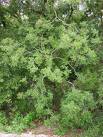Drummond Soapberry Tree Information
Images of Drummond Soapberry:






Drummond Soapberry grows in the following 10 states and provinces:
Arizona, Arkansas, Colorado, Kansas, Louisiana, Maine, Missouri, New Mexico, Oklahoma, TexasInformation about Drummond Soapberry:
The Sapindus Saponaria Var. Drummondii is commonly known as the Cherioni, Cherrion, Chinaberry, Drummond Soapberry, Indian Soap Plant, Jaboncillo, Mexican Soapberry, Soap Berry, Soapberry, Western Soapberry, Wild China-tree, Wild Chinaberry as well as Wild Chinatree.
Several taxonomic treatments have been proposed for western soapberry. Some authorities consider western soapberry and wingleaf soapberry to be discrete species (Sapindus drummondii and S. saponaria, respectively) . However, many others now regard these entities as varieties of a single species (Sapindus saponaria) . Still other taxonomists recognize only a single, although highly variable, species (Sapindus saponaria L.) . The currently preferred scientific name of western soapberry is Sapindus saponaria var. drummondii (Hook and Arn.) L. Benson . Western soapberry is a member of the primarily tropical family Sapindaceae, which comprises nearly 1,000 species . Western soapberry differs from the closely related wingleaf soapberry (Sapindus saponaria var. saponaria) in various morphological characteristics and in geographical distribution .Western soapberry grows from southwestern Missouri to southeastern Colorado, southward to Arizona and eastward to Texas, Louisiana, and northern Mexico . It is described as a Madro-Tertiary genus which was largely restricted to relatively moist riparian habitats as conditions became increasingly hot and dry during the late Pleistocene .Western soapberry grows as a dominant or codominant in a number of Southwestern riparian communities. Common codominants include Arizona black walnut (Juglans major), Mexican ash (Fraxinus berlandieriana), cedar elm (Ulmus crassifolia), and pigeon-berry (Rivina humilis). It is listed as a dominant or indicator in the following community type (cts) classifications: Area Classification Authority AZ,NM riparian cts Szaro and Patton 1986 Southwest riparian cts Szaro 1990a Southwest riparian cts Szaro 1990b TX: Santa Ana Nat'l. general veg. cts Vora 1990a Refuge sw NM riparian cts Medina 1986Some of the information provided here is attributed to:Tirmenstein, D. A. 1990. Sapindus saponaria var. drummondii. In: Fire Effects Information System, [Online]. U.S. Department of Agriculture, Forest Service, Rocky Mountain Research Station, Fire Sciences Laboratory (Producer). , available at the USDA Fire Effects Information System (FEIS) website